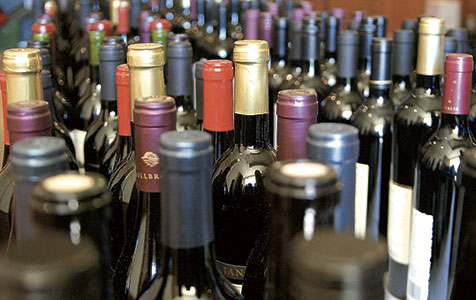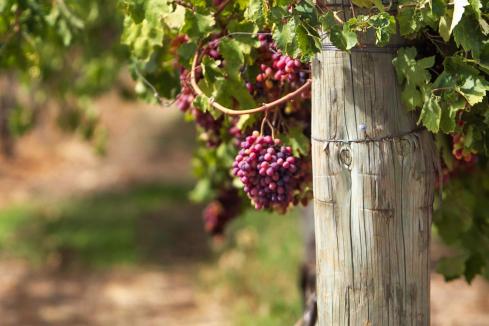As if commodity price uncertainty and falling consumer confidence weren’t bad enough, now the weather is conspiring to dent WA’s economy.


As if commodity price uncertainty and falling consumer confidence weren't bad enough, now the weather is conspiring to dent WA's economy.
If you remove one leg from a three-legged stool there is a chance it will not fall; remove two legs and it’s guaranteed to topple.
That last scenario is what drought in the south of the state means for the Western Australian economy.
Until a few weeks ago, there was a chance that the state’s agricultural industries would plug part of the hole left by low mineral prices that have hurt the gold, iron ore, and alumina industries.
Unfortunately, low winter rains and cold temperatures mean it’s highly likely that there will be a very small wheat crop this year and sheep farmers will be forced to de-stock dry paddocks.
Trouble in the mines and on the farms leaves oil and gas as WA’s one big growth industry, though it is only a major employer during the project construction phase.
Grim as this picture is, and changeable as it might be should mineral prices recover quickly and late rains arrive, it would be unwise to ignore the facts that WA’s burst of spectacular growth has come to an end – for now.
The challenge is obvious for companies exposed to mining and farming; and it’s as stark as the rapid de-stocking of office blocks in West Perth, as small explorers slash costs by sharing services or return to work in a home office.
But there is a bigger issue that every business in WA would be wise to recognise, starting with the biggest of them fall – the potential for the state’s burst of rapid population growth to stall, or even go into reverse.
Completion of construction on iron ore and gas projects in the north means that workers in that region will face a choice – either seek work in the Perth or elsewhere in the drought-hit south of the state, or head east.
Rather than acting as a magnet for people looking for a better lifestyle and higher wages, WA will shift into a de-stocking phase, just as is happening in West Perth and will soon happen on farms.
This change of direction, from rapid growth to slow growth (or no growth) will affect every facet of the state’s economy, including government finances, which is almost certainly why the government broke a promise last week and retained a duty on the sale of a business.
In dollar terms, retention of a duty that was supposed to disappear with the advent of the GST will add little more than $100 million a year to the state government’s annual income.
However, even such a relatively small amount of annual revenue will help replace lower mineral royalties.
If Colin Barnett and his team are preparing for ‘financial drought’ conditions over the next year or so, it would be wise for everyone else to do the same – if in fact they have not already done so.
Retailers have certainly been quick to react to falling sales – as a walk down any of the better-known shopping streets will demonstrate – with an alarming number of empty shops in once booming locations such as Subiaco and Claremont.
Not only have retail sales been hurt by shoppers clamming up for economic reasons, there is the political uncertainty that always precedes a federal election.
If there is good news on the horizon it can be found in three economic events. They are:
• the speed at which economic trends come and go in a world where business decisions are made faster than ever before;
• the falling value of the Australian dollar, which is aiding exporters and will eventually bring back foreign investors; and
• early evidence that mineral prices are at the bottom of their cycle, with two of the world’s biggest investment banks – Goldman Sachs and JP Morgan – tipping a rise in most commodity prices over the next six to 12 months.
On top of those three factors is the rapid recovery under way in the US economy, which will encourage the rest of the world to follow, and confidence that China will emerge with a more sustainable economy after its current slowdown caused largely by tougher government policies on poor banking practices.
As encouraging as those trends are they will take time to reach WA, where a ‘capital drought’ is hurting big and small mining companies just as an agricultural drought hurts farmers.
$A fall a nice drop
Evidence that the falling dollar could be the long-needed fillip for WA’s shell-shocked wine industry started to surface a few weeks ago, but has accelerated in recent weeks as the currency gets close to the US90 cents mark, a handy 14.3 per cent fall on the peak of $US1.05 reached earlier in the year.
The problem with currency changes and the wine-producing cycle is the time factor, with the glacial speed at which both forces move making it difficult to measure any improvement.
One way around that problem is personal experience, such as that of John Casella, managing director of the big NSW-based wine exporter Casella Wines.
Best known for its super-cheap Yellowtail range of wines, Casella carved out a reasonable share of the US wine market when the Australian dollar was low, and has hung on to that share by holding its prices to the point of running the export business at a loss.
Today, thanks to the sharply lower exchange rate, Casella is back to break even, and hopeful of being back to profits if the dollar continues to fall.
A second, but also less-than-perfect test of the dollar-induced wine sector recovery, can be measured in the share price of Treasury Wine Estates, the business that emerged from the de-merger of Foster’s brewing, and which contains some of Australia’s better-known wine brands, such as Penfolds and Rosemount.
Since January, as the all ordinaries index on the ASX has gone nowhere (up, down and now flat), the share price of TWE has rocketed up by 25 per cent, from $4.67 to around $5.88.
It’s stretching the point, but if TWE has risen that far thanks to the improving outlook for the wine industry, it’s reasonable to assume that other wine businesses are also heading up, perhaps even the many near-broke vineyards in the South West.










